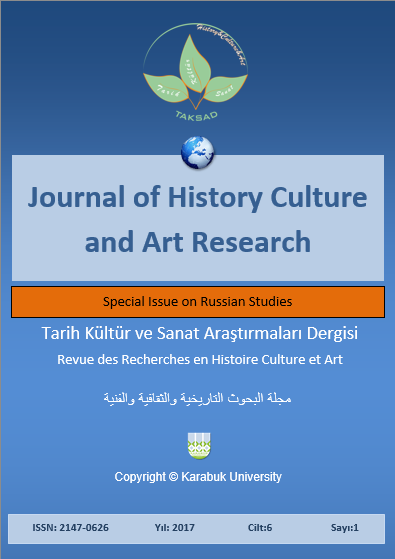Structural Analysis of the Oxymoron in the Sonnets of William Shakespeare
DOI:
https://doi.org/10.7596/taksad.v6i5.1246Keywords:
Linguistics, Language, Speech, Lexical and semantic characteristics, Types of oxymoron, Contrast, Opposition, Sonnet, Shakespeare.Abstract
This paper considers the structural groups of oxymoron in the Russian and English languages. It is also relevant to study oppositional lexical units represented in heterogeneous system languages from the standpoint of linguistic and extra linguistic meanings, since the figures of contrast are inconceivable without the associative-emotional and evaluative qualifications of the objects of opposition. They give the analysis of the oxymoron’s nature and its functions in two different-structured languages. The article has carried out lexical and semantic characteristics of oxymoron. In the linguistic literature there is no generalized, concrete and universal structural and semantic classification of this stylistic device. This study attempts to create a structural and semantic classification, combining all the existing varieties of this figure of contrast. The analysis is applied in the linguistic examination of the Sonnets written by William Shakespeare. When studying, systemizing and analyzing the opposite units, it is extremely important to study their structural features. The main objective of this study is to identify and describe the types of oxymoron in the language of Shakespeare’s sonnets.
References
Akhmanova, O. S. (1995). Dictionary of Linguistic Terms. Moscow.
Alsworth, D. E. (ed.) (1965). Classics in Semantics. New York.
Bochina, T. G. (2002). Contrast Stylistics: Essays on the Language of Russian Proverbs. Kazan: Publishing house of Kazan University.
Couse, D. A. (2000). Meaning in Language: An Introduction to Semantics and Pragmatics. Oxford.
Ismaeva, F. H. & Kornilova, L. A. (2016). The Category of Opposition in Lexical and Semantical aspects (Based on Russian and English Literature). The Turkish Online Journal of Design, Art and Communication, TOJDAC, July 2016 Special Issue, 1022-1026.
Kornilova, L. A. & Sitdikova, F. B. (2015). Ways of Transferring Implicit Information in English-Russian Fiction Translations. The Social Sciences, Medwell Journals, 10(6), 1001-1004.
Lyons, J. (1978). Introduction to theoretical linguistics. Moscow: Progress.
Novikov, L. A. (1995). Counterposing as a reception. Philological collection. Moscow.
Safina, D. R. (2015). Prospects for steady comparison research in the axiological aspect (Using the example of Russian, English and Tatar Languages). Social Sciences (Pakistan), 10(7), 1844-1847.
Shakespeare, W. (2004). The Sonnets. London: Collector’s Poetry Library.
Shakespeare, W. (2014). The works of Shakespeare. Moscow: Co-operative Publishing Society of Foreign Workers.
Tarlanov, Z. K. (1995). Methods and principles of linguistic analysis. Petrozavodsk: Petrozavod State University Publishing House.
Ulukhanov, I. S. (2004). Word-forming semantics in the Russian language and the principles of its description (3rd ed.). Moscow: Editorial URSS.
Downloads
Published
How to Cite
Issue
Section
License
All papers licensed under Creative Commons 4.0 CC-BY.- Share — copy and redistribute the material in any medium or format
- Adapt — remix, transform, and build upon the material for any purpose, even commercially.
Under the following terms:
Attribution — You must give appropriate credit, provide a link to the license, and indicate if changes were made. You may do so in any reasonable manner, but not in any way that suggests the licensor endorses you or your use.
- No additional restrictions — You may not apply legal terms or technological measures that legally restrict others from doing anything the license permits.







